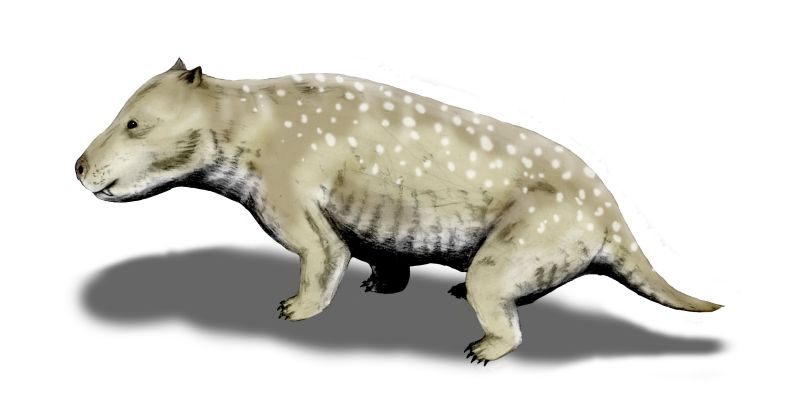- Exaeretodon
Taxobox
name = "Exaeretodon"

image_width = 250px
fossil_range = Middle toLate Triassic
regnum =Animal ia
phylum =Chordata
classis =Synapsida
ordo =Therapsida
subordo = Cynodontia
familia =Traversodontidae
genus = "Exaeretodon"
genus_authority = Cabrera, 1943
subdivision_ranks =Species
subdivision =
* "E. frenguelli" (type species )
* ?"E. argentinus" Bonaparte, 1962
* ?"E. major" (Huene, 1935-42 (originally "Traversodon "))
* "E. riograndensis" Abdala, Barbarena, and Dornelles, 2002
* ?"E. statisticae" Chatterjee, 1982
* ?"E. vincei" (Bonaparte, 1963 (originally "Proexaeretodon "))"Exaeretodon" is a
genus of traversodontidcynodont ; several species are known, from various formations. "E. argentinus", "E. frenguelli", and "E. vincei" are from theCarnian -age (Upper Triassic ) Ischigualasto Formation ofArgentina . "E. major" and "E. riograndensis" are from theLadinian -age (Middle Triassic ) portion of theSanta Maria Formation of Brazil. "E. statisticae" is from the Carnian-ageMaleri Formation ofIndia . This genus was anherbivore up to 1.8 meters long (5.9 ft), with a specialized grinding action when feeding.cite web |url=http://home.arcor.de/ktdykes/travers.htm#Exaeretodon |title=TRIASSIC GOMPHODONTS; Traversodontidae, an internet directory |accessdate=2007-07-29 |last=Dykes |first=Trevor ]An analysis of the size of the bones of calves collected in
Paleorrota concluded that the mother "Exaeretodon" had one or two calves, for one pregnancy. Another point of interest is that these cynodonts haddeciduous teeth , which is a characteristic of mammals and means that babies could not chew, and required specialized parental care. Only older juveniles had permanent teeth.Gallery
ee also
*
Paleorrota References
External links
* [http://www.palaeos.com/Mesozoic/Triassic/Carnian.600.htm#Exaeretodon "Exaeretodon"] at Palaeos.com.
* [http://www.royalsul.com.br/paleo/galeria.asp Dinosaurs of Rio grande do Sul.]
Wikimedia Foundation. 2010.
